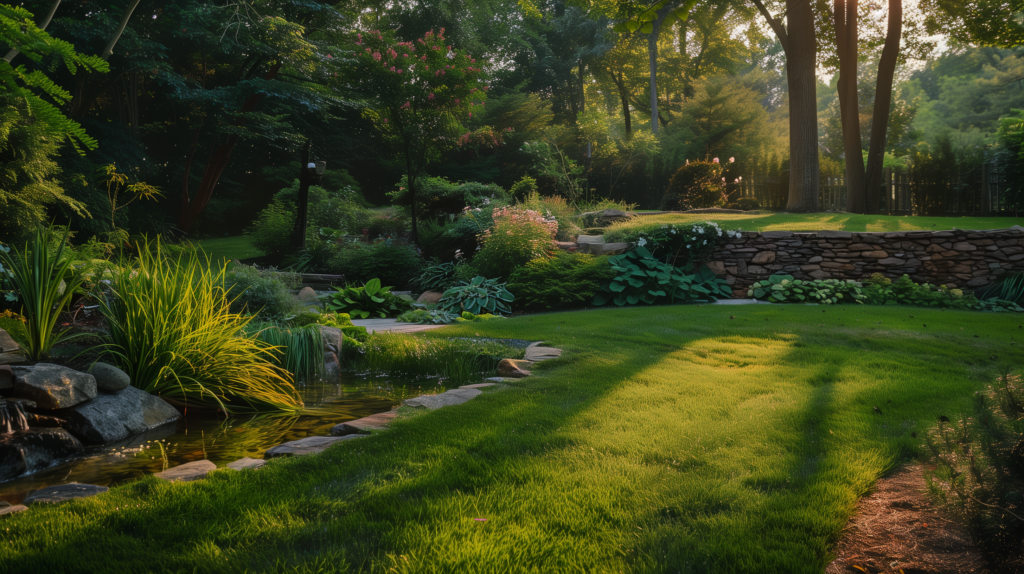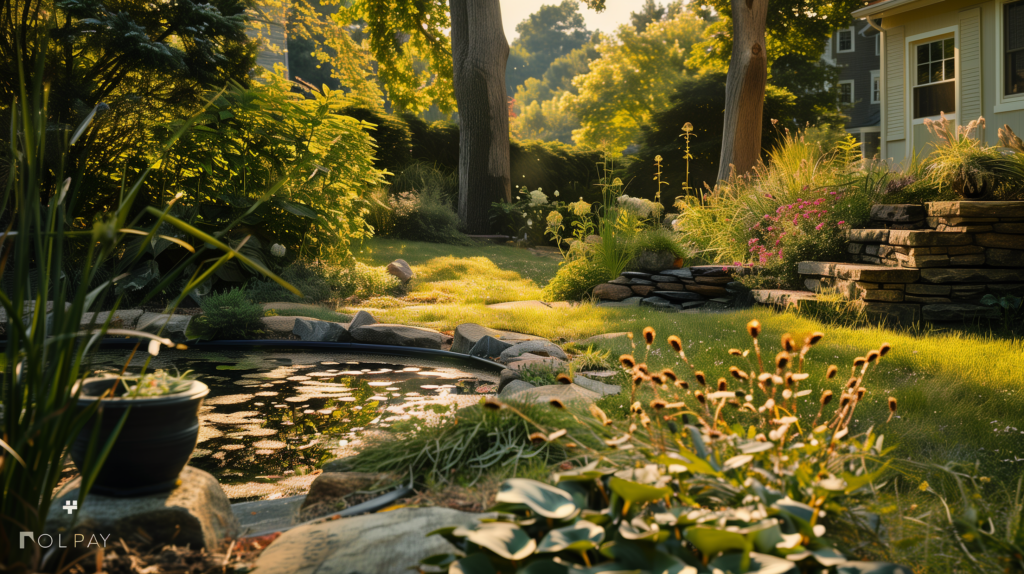Have you ever felt inspired and peaceful when you walked through a city park, public garden, or a well-designed courtyard? You may not realize it initially, but landscapes are specifically designed to give you a feeling of tranquility.
In both commercial and residential landscaping services, we at Dracut Landscaping use five elements and principles to plan landscapes before picking any materials and we’ve collected them for you below.
The 5 Principles of Landscape Design
Landscape design principles guide the integration of design elements. Depending on how they are used, they can either highlight or blend in parts of the design. The principles are:
1. Proportion
Proportion refers to how the sizes of plants, structures, and other parts of a landscape compare to each other.
2. Transition
This refers to the flow of the landscape and how its components make smooth connections between different areas.
3. Focal Points
Structures such as fireplaces or other stone structures can be utilized to catch the eye and add depth to a design.

4. Unity
A coordinated landscape design creates a sense of connectedness where the features come together to look complete and harmonious.
5. Balance
Balance refers to the use of the same materials as the structure.
The Elements of Landscape Design
Landscape design elements are the basic rules that apply to every landscape plan as they ensure the design flows smoothly and include aspects such as what you use in your landscape (plants or hard structures). They are:
1. Color
Color is crucial in both landscape and hardscape design and the colors of leaves, flowers, and the hardscape can set the overall tone of the area.
2. Scale
Scale refers to the size of materials in a landscape. When planning a landscape, think about the size of plants compared to each other and to the things around them.
3. Form
Form is how a plant looks in terms of its shape. Whether the plants stand upright, hang, or spread, it is crucial in how they are placed.
4. Texture
The texture is a key part of landscaping which refers to the visual and tactile qualities of plants.
5. Line
Lines are the basic building blocks that help shape your design. This is typically seen through walkways, hedges, or buildings.

Differentiating Between Residential and Commercial Landscape Design
Landscape designers and property owners must understand the differences between designing for homes and businesses to create cohesive landscapes. As commercial properties involve fixed structures and clear lines of sight, they require an emphasis on the line and scale elements. They might also require trees that offer shade and plants that can resist tough weather conditions.
On the other hand, residential landscape design is relatively smaller in scale. Landscape designers can use a wider range of plants and add features such as water fountains, fireplaces, and lights to create a sensory experience. Residential landscape design is more about personalizing the design to match the homeowner’s style rather than simply adding plants to fill the space.
Get Started on Commercial or Residential Landscaping Services with Dracut Landscaping
At Dracut Landscaping, we thoroughly plan out your landscape design by taking all the above elements and principles into consideration. Contact us for a quote today!


